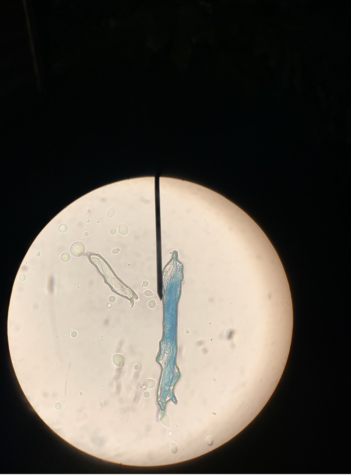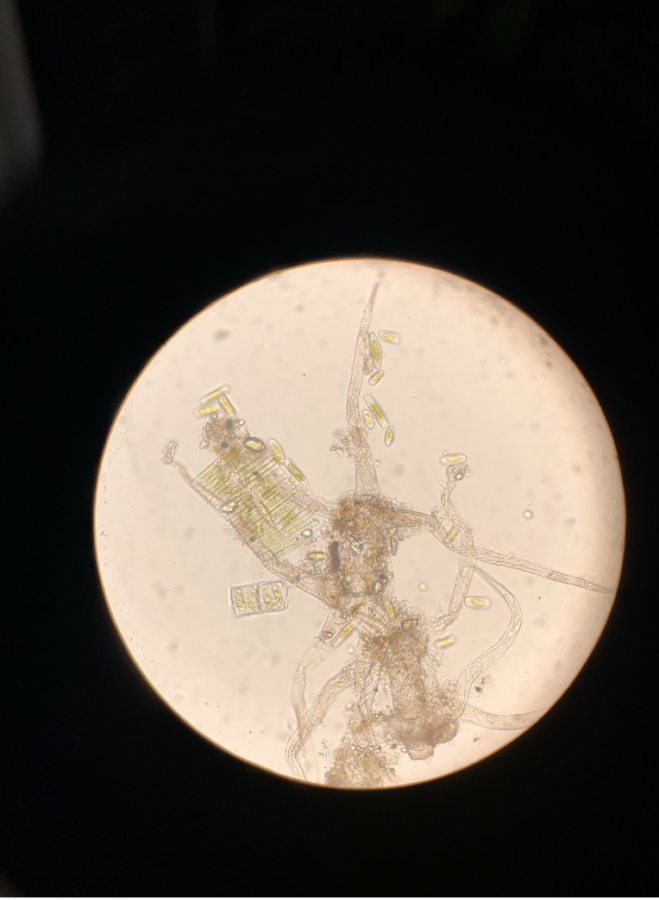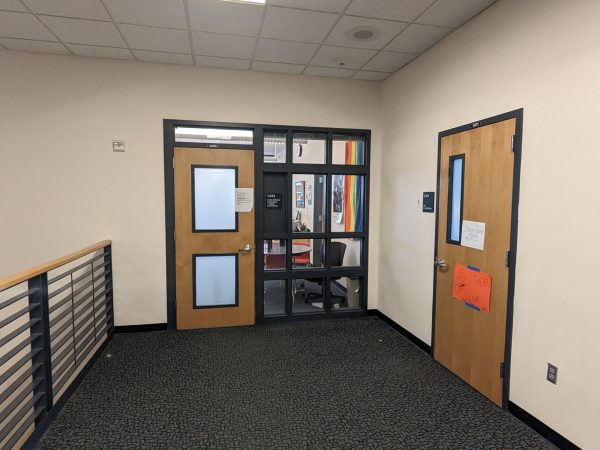Discovering interests: ISEF project about the Willamette River
Grover and Lin are analyzing their findings, zooming in on the diatoms related to the Willamette River algae blooms last year.
The International Science and Engineering Fair (ISEF) is a way for students to discover new interests and a way to give curious people new opportunities and experiences. For some, ISEF is an inspiration to find new interests. For Uma Grover and Melinda Lin, this idea rings true.
“It’s like a lot of independent research as to what you’re interested in,” Grover said. “There are really good opportunities attached. ISEF is just a fun program.”
Their project investigated the Willamette River algae blooms last summer, which resulted in danger for the community. This danger only happened at the peak of the algae blooms, and was dangerous for the dogs in the community, as the toxic bacteria in the water was deadly to these canines. For the past couple of months, Lin and Grover have set out to investigate this event that occured last June.
The effect of the algae blooms in the river on diatoms is what Lin and Grover strove to find during this project. They are investigating their data this fall,
“We found that during the last algae blooms we found less diatoms than after the algae bloom, which meant that algae blooms have some sort of impact on diatoms,” Grover said.
This is their developing reason for the algae blooms and its relationship with the other algae in the river. These discoveries can help the understanding of how these diatoms were affected by the algae blooms last summer, and offer more explanation as to what’s happening in the Willamette.
“Diatoms are photosynthesizing algae, they have a siliceous skeleton (frustule) and are found in almost every aquatic environment including fresh and marine waters, soils, in fact almost anywhere moist,” University College London said.
This is the algae that Lin and Grover have been observing in their project, and was also affected by the events of the infection, as the algae blooms were exacerbated by climate change.
Grover and Lin also shared a story behind the inspiration for their project. They would like to learn more about how the diatoms were affected, and add awareness of the effects of climate change while trying to add understanding to the problems affecting us.
“Because of climate change, temperatures are going up every year. And that means there’s going to be more algae blooms for longer and more often [periods] every year,” Lin said. “So understanding the effect of these algae blooms on the health of the river is also very important.”
Grover and Lin also faced struggles while trying to accomplish this project. Because of COVID-19, it both made their project easier and harder simultaneously. They were able to meet using online communication apps which made meetings easier because they didn’t need to be in-person to communicate compared to how they might’ve before COVID-19. They were also outside during the summer because they were testing during this time, which was more of a challenge.
“Just having masks on in like 90-degree weather wasn’t the most fun but yeah, it’s for the sake of staying healthy so it was worth it,” Lin said.
Grover and Lin are still in progress with their project, analyzing the data that they collected about the blooms in the summer, to find its effects on the diatoms. They appreciate the help of many for their contributions, including Dr. Tullos, a professor at OSU who helped them develop a hypothesis and ideas for the project.
Updated Jan. 3, 2022.

(Courtesy of Uma Grover)
Your donation will support the student journalists of West Linn High School. Your contribution will allow us to continue to produce quality content by purchasing equipment, software, and continuing to host our website on School Newspapers Online (SNO).

Helena Erdahl, senior, is the Coverage Editor-in-Chief of wlhsNOW, and has been learning and writing about journalism since freshman year. She loves writing,...


























![Game, set, and match. Corbin Atchley, sophomore, high fives Sanam Sidhu, freshman, after a rally with other club members. “I just joined [the club],” Sidhu said. “[I heard about it] on Instagram, they always post about it, I’ve been wanting to come. My parents used to play [net sports] too and they taught us, and then I learned from my brother.”](https://wlhsnow.com/wp-content/uploads/2024/03/MG_7715-2-1200x800.jpg)





![The teams prepare to start another play with just a few minutes left in the first half. The Lions were in the lead at halftime with a score of 27-0. At half time, the team went back to the locker rooms. “[We ate] orange slices,” Malos said. “[Then] our team came out and got the win.”](https://wlhsnow.com/wp-content/uploads/2023/10/IMG_2385-1200x800.jpg)





![At the bottom of the third inning, the Lions are still scoreless. Rowe stands at home plate, preparing to bat, while Vandenbrink stands off to the side as the next batter up. Despite having the bases loaded, the team was unable to score any runs. “It’s just the beginning of the season. We’re just going to be playing out best by June, [and] that’s where champions are,” Rowe said.](https://wlhsnow.com/wp-content/uploads/2024/03/IMG_3077-1200x900.jpg)
















































































